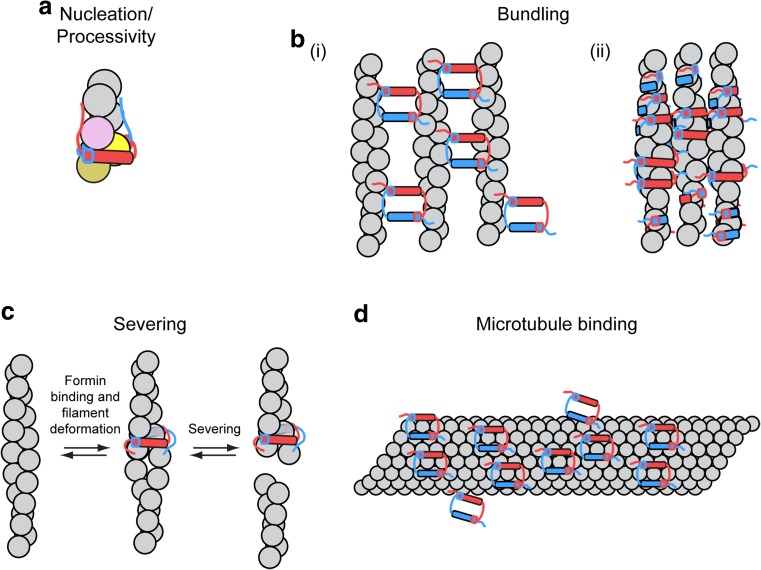Fig. 6.
Formin tail-mediated interactions with actin and microtubules. Cartoon representations of interactions between formin FH2-tail constructs with actin filaments and microtubules. Tail regions are depicted as unstructured regions and are color-coded to match their corresponding FH2 domain. a Electrostatic interactions between tail regions and actin promote formin-mediated filament nucleation and FH2 processivity. b Formins can associate with the sides of actin filaments (i) via binding sites on the exterior surfaces of their FH2 domains or (ii) by encircling the filaments with their FH2 domains. In several cases, actin filament decoration by formins promotes filament bundling. Binding is often strengthened via interactions between formin tail regions and actin. c A model for INF2-mediated severing in which an FH2-tail construct of the formin INF2 encircles an actin filament and creates a localized deformation, which promotes severing (Gurel et al. 2014). d FH2-tail constructs of a representative formin decorate a microtubule (gray tube) via interactions mediated by the post subdomains and strengthened by the tail regions

